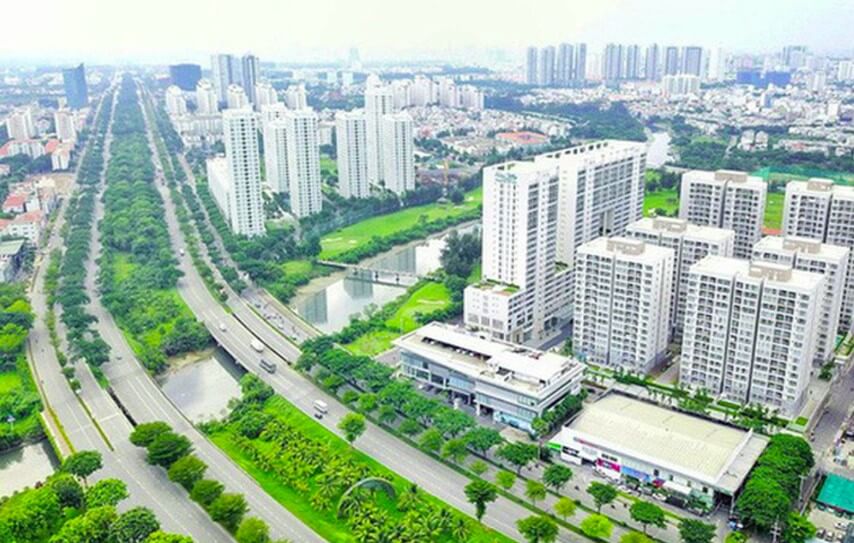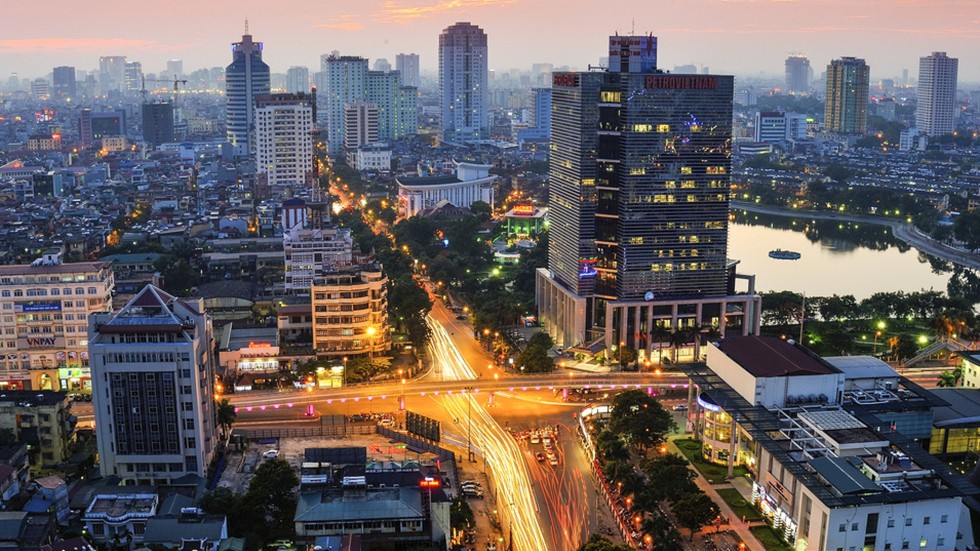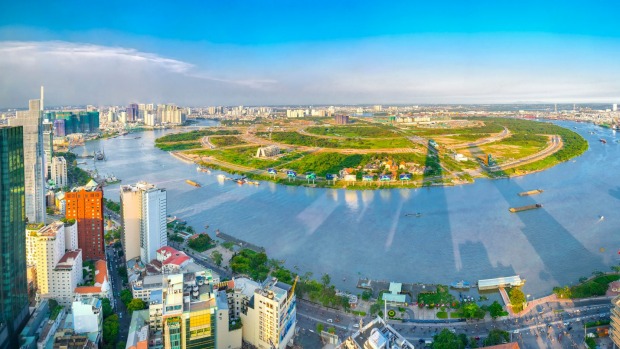Agricultural land use regime according to Vietnam land law
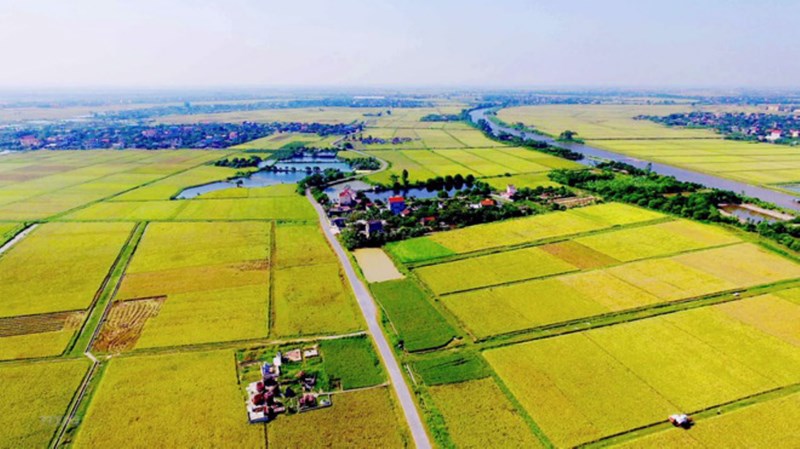
Agricultural land is an important type of land according to Vietnam land law. Let’s find out this issue with lawyer X through the following situation: “Dear Lawyer! What is allocation quotas for agricultural land in Vietnam? What are regulations on agricultural land used by households, individuals or communities? Thanks for answering my questions,
Legal grounds
- 2013 Vietnam Land law
Regulations on allocation quotas for agricultural land
– The allocation quotas for land for annual crops, aquaculture and salt production for each household or individual directly engaged in agricultural production are prescribed as follows:
+ Not exceeding 3 hectares for each type of land in provinces and centrally run cities in the southeast region and Mekong Delta region;
+ Not exceeding 2 hectares for each type of land in other provinces and centrally run cities.
– The allocation quotas for land for perennial crops for each household or individual in a delta commune, ward or township must not exceed 10 hectares and must not exceed 30 hectares for each household or individual in a midland or mountainous commune, ward or township.
– The land allocation quota for each household or individual does not exceed 30 hectares for each of the following land categories:
+ Land for protection forest;
+ Land for production forest.
– In case a household or individual is allocated with land of different categories including land for cultivation of annual crops, land for aquaculture and land for salt production, the total quota for all categories must not exceed 5 hectares.
If the household or individual is additionally allocated with land for perennial crops, the land allocation quota for perennial crops must not exceed 5 hectares in a delta commune, ward or township and must not exceed 25 hectares in a midland and mountainous commune, ward or township.
If the household or individual is additionally allocated with land for production forest, the land allocation quota for production forest must not exceed 25 hectares.
– The allocation quota for empty land, land for bare hill or land with water surface under the type of unused land to households or individuals for the purpose of agriculture, aquaculture or salt production in accordance with land use master plan must not exceed the quotas prescribed in Clauses 1, 2, and 3 of this Article, and such quotas shall not be included in the allocation quotas of agricultural land to households or individuals as prescribed in Clauses 1, 2, and 3 of this Article.
Provincial-level People’s Committees shall prescribe the allocation quotas of empty land, land for bare hill and land with surface water in the type of unused land to households or individuals for use in accordance with land use master plans and plans which have been approved by competent state agencies.
– The allocation quotas of agricultural land for annual crops, perennial crops, afforestation, aquaculture or salt production in the buffer zone of a special-use forest for each household or individual must comply with Clauses 1, 2, 3, 4 and 5 of this Article.
– Households and individuals may continue using the land area which is located in a commune, ward or township other than where they have permanent residence status books. If that land is allocated without land use levy, its area shall be included in the allocation quota for agricultural land of the households or individuals
The land administration agency that allocates agricultural land without land use levy to households or individuals shall send a notice to the commune-level People’s Committee of the locality where the households or individuals have permanent residence status books for its calculation of allocation quotas of agricultural land.
– The area of agricultural land of households or individuals, which is acquired through the transfer, lease, sublease, inheritance or donation of land use rights, the receipt of land use rights contributed as capital or is contracted from other subjects or leased from the State, is not included in the allocation quota of agricultural land as prescribed in this Article.
Quota for acquisition of agricultural land use rights by households and individuals
– The quota for acquisition of land use rights by households or individuals must not exceed 10 times of the allocation quota for agricultural land for households or individuals applicable to each type of land prescribed in Clauses 1, 2 and 3, Article 129 of Land law.
– The Government shall prescribe quotas for acquisition of land use rights of households and individuals in accordance with specific conditions of each locality and in each period.
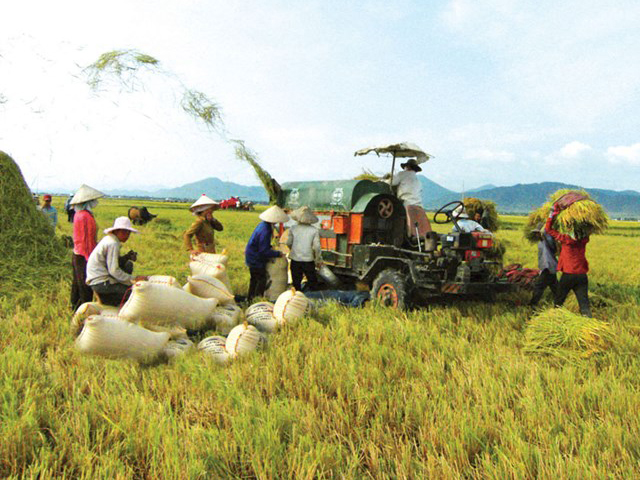
Regulations on agricultural land used by households, individuals or communities
– Agricultural land used by households or individuals includes agricultural land allocated or leased by the State and agricultural land of which land use rights are recognized by the State or leased from other organizations, households or individuals or obtained through exchange, transfer, inheritance or donation in accordance with law.
– The use of agricultural land allocated by the State to households or individuals is prescribed as follows:
+ Households and individuals that are allocated land by the State prior to the effective date of Land law may continue using such land in accordance with Land law;
+ In a locality where land has not been allocated to households or individuals in accordance with the land law, the commune-level People’s Committee shall make a plan for land allocation and request the district-level People’s Committee to decide on land allocation;
+ In a locality where the People’s Committees of different levels have provided guidelines for households and individuals to negotiate and adjust land areas for one another during the implementation of land policies and law before October 15, 1993, and such land area has been used stably, the current land users may continue using their land.
– The use of agricultural land by communities is prescribed as follows:
+ Communities are allocated land or recognized land use rights by the State to preserve national identities associated with the traditions and customs of the people;
+ Communities which are allocated land or recognized land use rights by the State shall protect the allocated land and may use land for combined purposes of agriculture and aquaculture, but may not use such land for other purposes.
Regulations on agricultural land used for public purposes
– Depending on the land fund, characteristics and demands of the locality, each commune, ward or township may establish an agricultural land fund for public purposes of the locality which does not exceed 5% of the total land area for annual crops, perennial crops and aquaculture production.
Agricultural land which is returned or to which land use rights are donated to the State by organizations, households or individuals, reclaimed land and expropriated agricultural land constitute the source for creation or supplementation of the agricultural land fund used for public purposes of the commune, ward or township.
In a locality where the area of agricultural land fund used for public purposes exceeds 5%, the excess area must be used for construction or compensation when other land is used for construction of public facilities of the locality; or be allocated to households and individuals that are directly .engaged in agriculture or aquaculture in the locality but have not been allocated or still lack production land.
– The agricultural land fund for public purposes of a commune, ward or township shall be used for the following purposes:
+ Construction of public facilities of the locality, including facilities for culture, physical training and sports, entertainment, recreation, health, education, markets, cemeteries, graveyards and other public facilities in accordance with regulations of the provincial-level People’s Committee;
+ Compensation for people whose land is used for construction of public facilities as prescribed at Point a of this Clause;
+ Construction of gratitude houses and charity houses.
– The commune-level People’s Committee shall lease the land area which has not been used for the purposes specified in Clause 2 of this Article to households and individuals in the locality for the purposes of agriculture and aquaculture, through auctions of land lease. The land use term for each lease period must not exceed 5 years.
Rentals gained from the lease of land that is part of the agricultural land fund for public purposes must be paid to the state budget under management of the commune-level People’s Committee and may only be used for public needs of the commune, ward or township in accordance with law.
– The agricultural land fond for public purposes of a commune, ward or township must be managed and used by the commune-level People’s Committee of the locality in accordance with the land use master plan and plans approved by competent state agencies.
Agricultural land used by organizations, overseas Vietnamese and foreign- invested enterprises
– Economic organizations, overseas Vietnamese or foreign-invested enterprises that have demand for land for agriculture, forestry, aquaculture or salt production, shall be considered by the State to lease land for implementation of investment projects.
– Economic organizations and public non-business organization that have been allocated or leased land prior to the effective date of Land law for the purpose of agriculture or forestry production, shall review the current land use status and make a plan for land use. A plan for land use must clearly define the land area and boundaries, the area of land of each type to be used and its use term, and the land area to be handed over to the locality.
Provincial-level People’s Committees shall direct the review and approval of plans for land use; allocate or lease land in accordance with the approved plans for land use; and recover the land that is unused, or used for a improper purpose, or contracted, leased, lent illegally, or encroached or occupied in order to create the land fund for allocation and lease to organizations, households and individuals. During the process of land allocation or land lease, ethnic minority households and individuals in the locality that have no land or lacking production land, shall be prioritized.
– Land that is allocated by the State without land use levy to economic organizations for agriculture, forestry, aquaculture or salt production before the effective date of Land law, must be changed to leased land.
Regulations on land for rice cultivation
– The State shall develop policies to protect land for rice cultivation and to limit the change from the purpose of rice cultivation to other non-agricultural purposes. In case it is necessary to change a certain area for rice cultivation to another purpose, the State shall take measures to supplement such land area or improve the efficiency in using land for rice cultivation.
The State shall adopt policies to support and invest in the construction of infrastructure and application of modern science and technologies into the areas planned for high-productivity and high-quality rice cultivation.
– Those who use land for rice cultivation shall improve and increase the fertility of the soil. They may not use that land for planting perennial trees, afforestation, aquaculture and salt production or for non-agricultural purposes without permission by competent state agencies.
– People who are allocated or leased land by the State for non-agricultural purposes and that land is currently used for wet rice cultivation, shall pay a certain amount of money under the Government’s regulations for the State to supplement the lost area of wet rice cultivation land or improve efficiency in using land for rice cultivation.
Regulations on land with production forest
– The State shall allocate land with production forest which is natural forest to the forest management organizations for management, protection and development.
– The State shall allocate or lease land with production forest which is planted forest according to the following provisions:
+ Allocation of land to households and individuals directly engaged in agricultural production within the quotas prescribed at Point b, Clause 3, Article 129 of Land law for the purpose of forestry production. The area of production forest used by households and individuals which exceeds the quotas must change to leased land;
+ Lease of land to economic organizations, households, individuals, overseas Vietnamese or foreign-invested enterprises to implement afforestation projects;
+. Economic organizations, households, individuals, overseas Vietnamese or foreign-invested enterprises which are allocated or leased land with production forest by the State as prescribed at Points a and b of this Clause may use the land not covered with forest for planting forest or perennial trees.
– Economic organizations, overseas Vietnamese or foreign-invested enterprises using land with production forest may concurrently provide landscape and eco-environmental tourist services using the space under the forest canopy.
– Concentrated land area with production forest which is far from residential areas and can not be allocated directly to households or individuals, shall be allocated by the State to organizations for protection and development of the forest combined with agricultural production, forestry or aquaculture.
Regulations on land with protection forest
– The State shall allocate land with protection forest to the protection forest management organization for management, protection, zoning off for regeneration and afforestation in accordance with land use master plans and plans already approved, by competent state agencies. These organizations may use land for other combined purposes in accordance with the law on forest protection and development.
– The protection forest management organization shall allocate land with protection forest under contracts to households or individuals that are living in the protection forest area for protection and development of the forest. District-level People’s Committees shall allocate residential land and land for agricultural production to such households or individuals.
– Organizations, households or individuals that have demand and ability to protect and develop the forest and are living in the protection forest area for which no management organization has been established or in the area that is planned for protection forest, shall be allocated the land with protection forest for protection and development, and may use the land for other combined purposes in accordance with the law on forest protection and development.
– Provincial-level People Committees shall decide on the lease of land with protection forest to economic organizations in the areas where it is allowed to provide landscape and eco- environmental tourist services under the forest canopy.
– Communities that are allocated by the State protection forests in accordance with the Law on Forest Protection and Development, are entitled to be allocated land with protection forest for protection and development. The communities have the rights and obligations prescribed in the Law on Forest Protection and Development.
Regulations on land with special-use forest
– The State shall allocate land with special-use forest to the special-use forest management organization for management and protection in accordance with land use master plans and plans already approved by competent state agencies. These organizations may use the land for other combined purposes in accordance with the law on forest protection and development.
– The special-use forest management authority shall allocate under short-term contracts land with special-use forest in strictly protected forest areas to households or individuals that can not move out of the area to protect the forests.
– The special-use forest management organization shall allocate under contracts land with special-use forest in eco-rehabilitation areas to households or individuals residing stably in the area to protect and develop the forests.
– Competent People’s Committees shall decide to allocate and lease land in the buffer zones of special-use forests to organizations, households and individuals for the purpose of production, research or experiment on forestry or in combination with national defense or security tasks in accordance with the master plan for forest development of the buffer zone. These subjects may use the land for other combined purposes in accordance with the law on forest protection and development.
– Provincial-level People Committees shall decide to lease land with special-use forest in the area that is allowed to provide landscape and eco-environmental tourist services under the forest canopy to economic organizations.
Regulations on land for salt production
– Land for salt production shall be allocated to households or individuals within the local land allocation quota for salt production. The land area which exceeds the allocation quota must be changed to leased land.
Land for salt production shall be leased by the State to economic organizations, overseas Vietnamese or foreign-invested enterprises to implement investment projects on salt production.
– Land areas where salt can be produced at high productivity and with high quality shall be protected and primarily reserved for salt production.
– The State shall encourage the use of land areas with potential for salt production for industrial and daily needs.
Regulations on inland land with water surface
– Ponds, lakes and marshes shall be allocated by the State within land allocation quotas to households or individuals for aquaculture and agricultural production.
Ponds, lakes and marshes shall be leased by the State to economic organizations, households, individuals, overseas Vietnamese or foreign-invested enterprises to implement investment projects on aquaculture production, agricultural production or agricultural production in combination with non-agricultural purposes.
– In case a pond, lake or marsh is located in several communes, wards and townships, its use shall be decided by the district-level People’s Committee. In case a pond, lake or marsh is located in several districts, towns and provincial cities, its use shall be decided by the provincial-level People’s Committee. In case a pond, lake or marsh is located in several provinces and centrally run cities, its use shall be determined by the Government.
Regulations on coastal land with water surface
– Coastal land with water surface shall be leased by the State to economic organizations, households, individual, overseas Vietnamese or foreign-invested enterprises for aquaculture, agricultural, forestry, salt production or non-agricultural purposes.
– The use of coastal land with water surface is prescribed as follows:
+ Conforming with land use master plans and plans which have been approved by competent state agencies;
+ Protection of land and increase of the sedimentation process in coastal land;
+ Protection of the ecosystem, environment and landscape;
+ Not hampering the protection of national security and maritime navigation.
Regulations on riparian and coastal alluvial land
– Riparian and coastal alluvial land includes riparian alluvial land, river islets, coastal alluvial land and sea islands.
– Riparian and coastal alluvial land shall be managed by the People’s Committee of the commune, ward or township where such land is located.
Riparian and coastal alluvial land frequently expanded or eroded shall be managed and protected by district-level People’s Committees.
– Riparian and coastal alluvium land shall be leased by the State to economic organizations, households, individuals, overseas Vietnamese or foreign-invested enterprises to implement investment projects on agricultural or non-agricultural production and business.
– Households or individuals that are allocated riparian and coastal alluvial land by the State for agricultural purpose prior to the effective date of Land law may continue using such land for the remaining land use term. At the expiry of this term, if they still have demand to use the land in accordance with land use master plans and plans approved by competent agencies and do not violate the land law, the State shall consider leasing the land to them.
– The State shall encourage economic organizations, households and individuals to invest in the use of riparian and coastal alluvial land.
– The Government shall detail this Article.
Regulations on land used for farm economy
– The State shall encourage farm economy of households or individuals in order to use land efficiently for the development of production, expansion of the scale and enhancement of the efficiency of land use in agriculture, forestry, aquaculture or salt production, in association with services, processing and sale of agricultural products.
– Land used for farm economy includes the land allocated by the State without land use levy within land allocation quotas applicable to households and individuals that are directly engaged in agriculture, forestry, aquaculture or salt production as prescribed in Article 129 of Land law, the land leased from the State, the land obtained via lease, transfer, inheritance and donation, the land contracted from organizations, and the land contributed by households or individuals.
– Households or individuals that are using land for farm economy may change the land use purposes in accordance with law.
– Households or individuals using land for farm economy in accordance with approved land use master plans and plans without any disputes, may continue using the land in accordance with the following provisions:
+ If the land is allocated without land use levy and within the allocation quotas applicable to households or individuals directly engaged in agriculture, forestry, aquaculture or salt production as prescribed in Clause 1, Article 54 of Land law, households or individuals may continue using the land under Clause 1, Article 126 of Land law;
+ If the land is allocated without land use levy to households or individuals not directly engaged in agriculture, forestry, aquaculture or salt production, at the expiry of the land use term, households or individuals shall change to lease land;
+ If the land is leased from the State or transferred, inherited, donated or contracted from organizations or contributed by households or individuals, households or individuals may continue using the land in accordance with Land law.
– It is forbidden to take advantage of farm economy to occupy and accumulate land for non-production purposes.
Please see more:
- Instructions for exclusive registration of company logos in Vietnam
- Service of changing the legal representative of Vietnamese enterprises
Services of Lawyer X
Prestigious professional services: Firstly, the team of consultants and consultants for many years in the field of civil status, and customer support.
On-time: Certainly, with the motto “Get your lawyer right at your fingertips”, we ensure the service always performs on time. The rights and interests of customers always come first.
Cost: Besides, Lawyer X’s service costs are highly competitive; depending on the nature of the particular case. So, we want our guests to have the best possible service experience. Therefore, costs which guaranteed to be the most suitable and economical for customers.
Confidentiality of client information: Finally, all personal information of clients Lawyer X will be 100% confidential.
If you need any further information, please contact LSX Law firm: at +84846175333 or Email: [email protected]
Frequently asked questions
The allocation quotas for land for annual crops, aquaculture and salt production for each household or individual directly engaged in agricultural production are prescribed as follows:
+ Not exceeding 3 hectares for each type of land in provinces and centrally run cities in the southeast region and Mekong Delta region;
+ Not exceeding 2 hectares for each type of land in other provinces and centrally run cities.
– The land allocation quota for each household or individual does not exceed 30 hectares for each of the following land categories:
+ Land for protection forest;
+ Land for production forest.
The allocation quotas for land for perennial crops for each household or individual in a delta commune, ward or township must not exceed 10 hectares and must not exceed 30 hectares for each household or individual in a midland or mountainous commune, ward or township.
Conclusion: So the above is Agricultural land use regime according to Vietnam land law. Hopefully with this article can help you in life, please always follow and read our good articles on the website: lsxlawfirm.com


